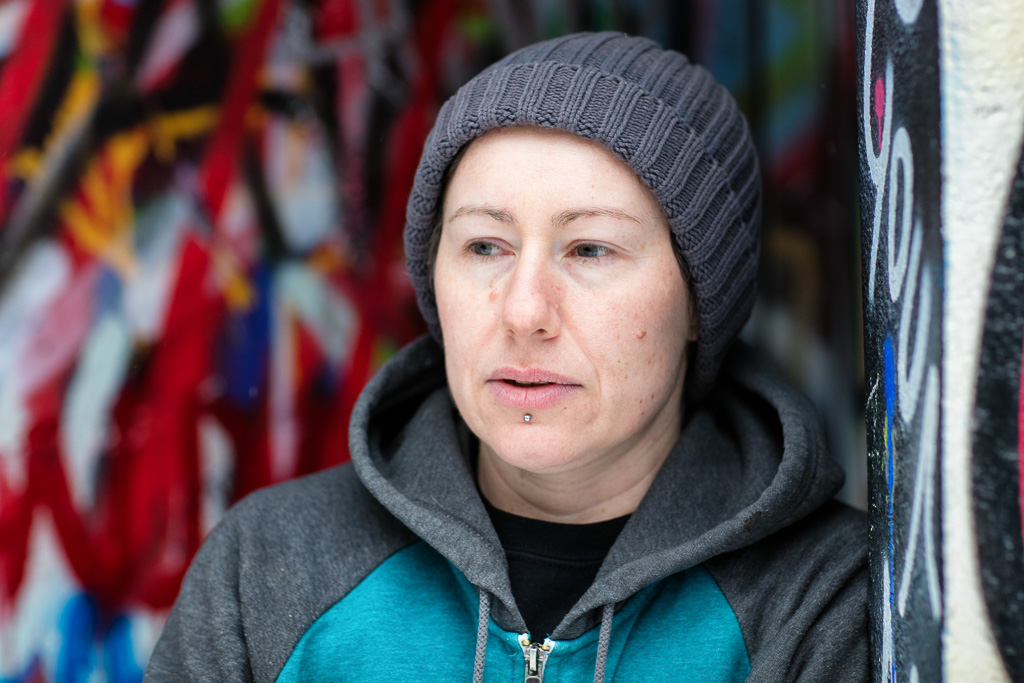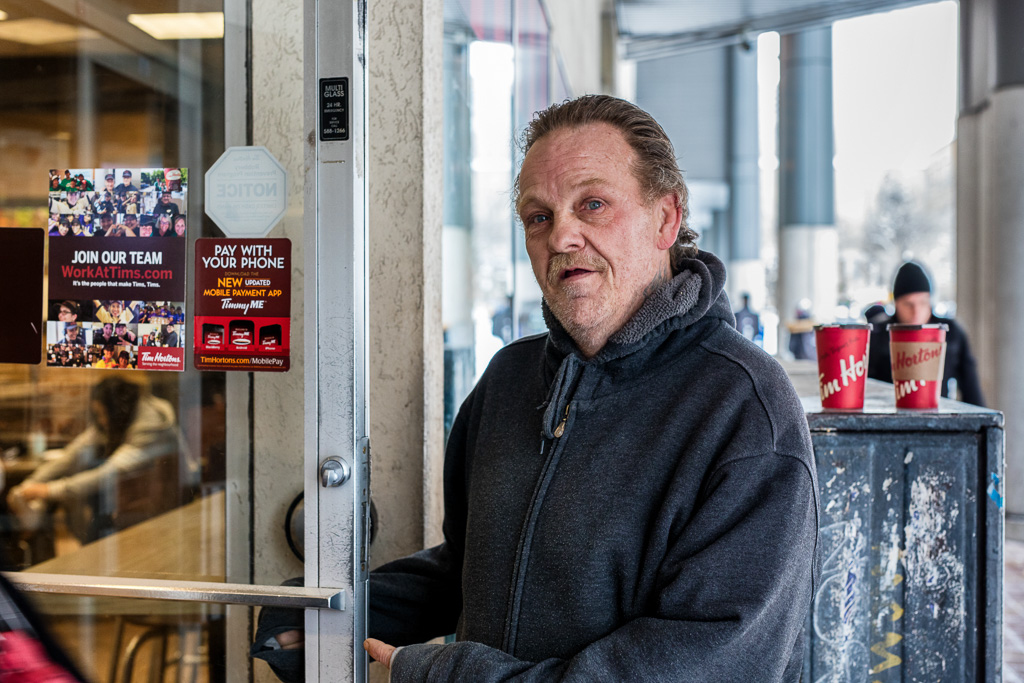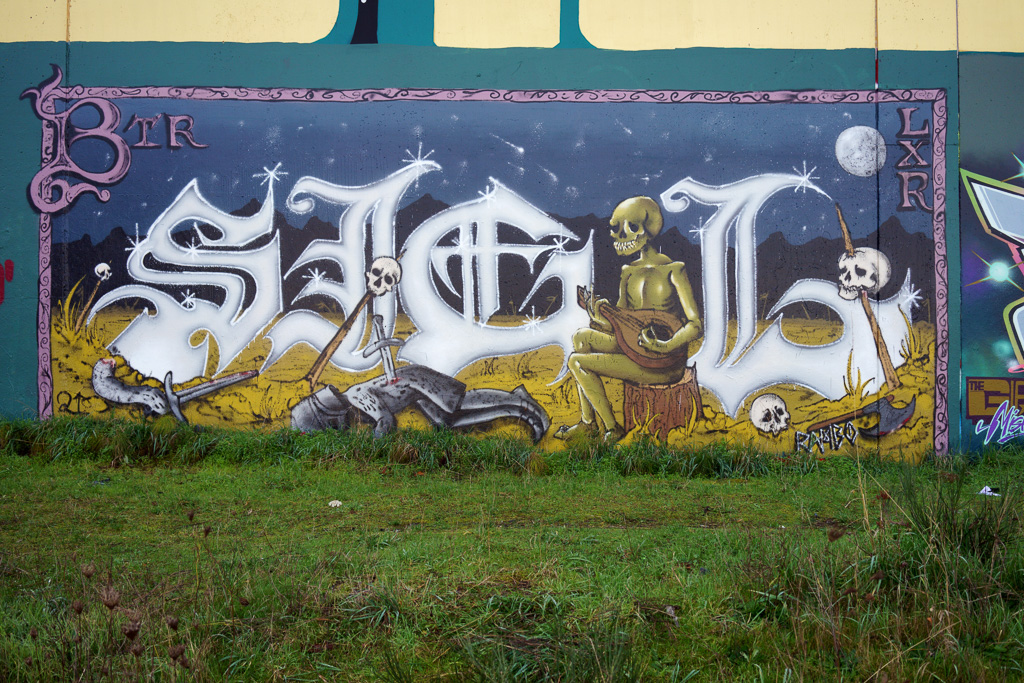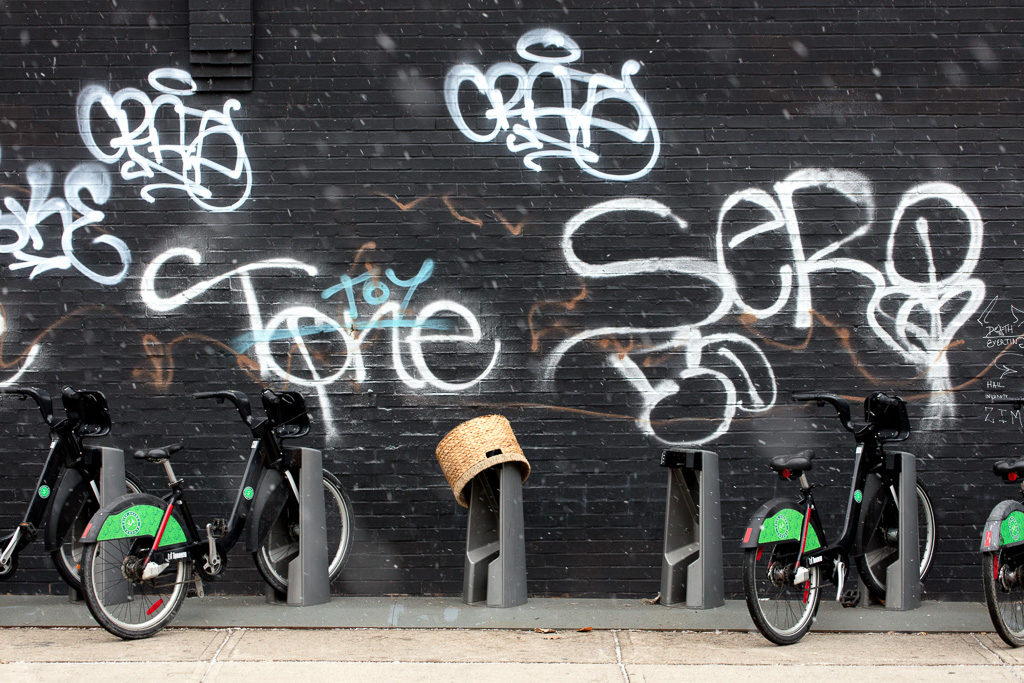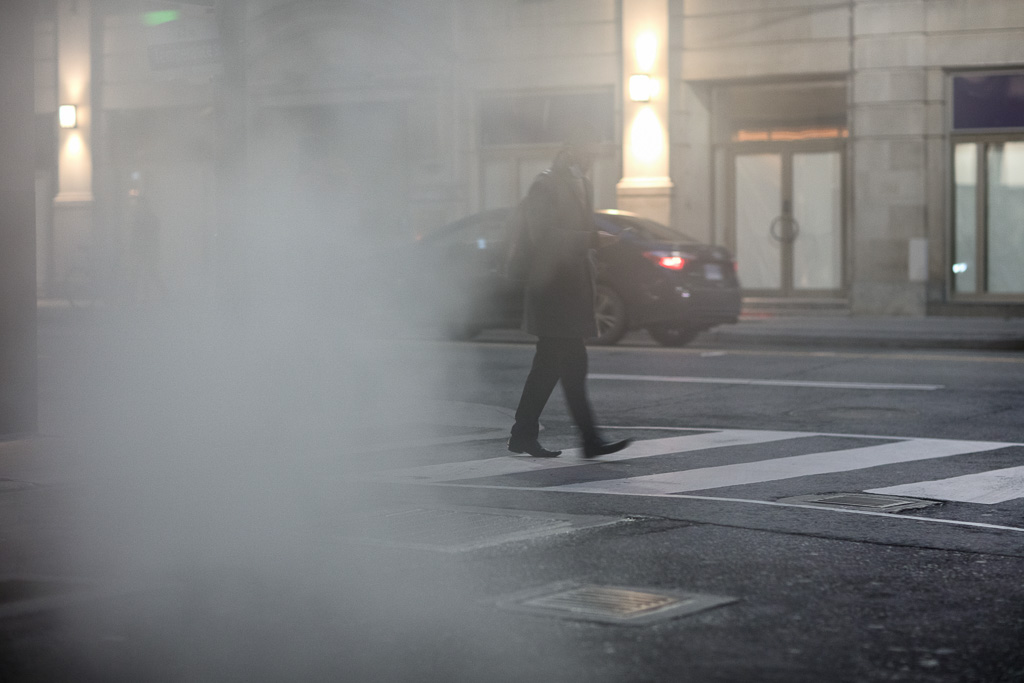I spoke with Eyrish on a cold January evening outside the LCBO at Yonge & Wellesley. I don’t think Eyrish is his legal name, more a nom de guerre. When I think of it, there’s no reason each of us shouldn’t have 20 different names, each name for a different mood. When I’m feeling depressed, you can call me Clem; and when I’m feeling anxious, you can call me Walter. In any event, the man shown here was feeling cold and maybe a bit manic and he asked me to call him Eyrish.
For some of the shots, he posed with an empty beer can, but I don’t like those shots as they play to a homeless trope that doesn’t serve anyone, least of all Eyrish who didn’t appear to be drunk, empty beer can notwithstanding. I prefer a simpler shot. He looks up and to the right from his seat on the ground. He’s wearing a hoodie under a leather jacket, and a toque to keep his head warm. I kneel across the sidewalk from him and catch him in a pause from his frenetic banter.



